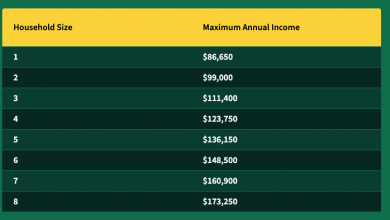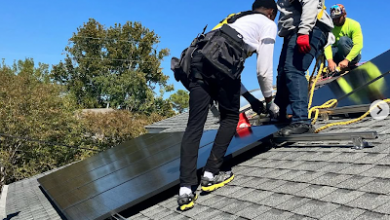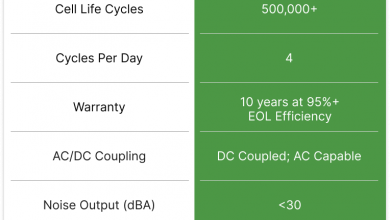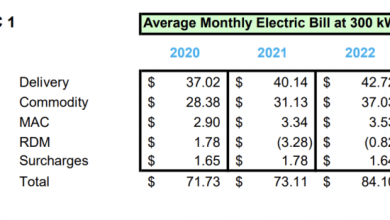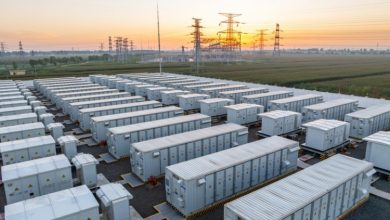Are Solar Panels Mandatory in NYC?
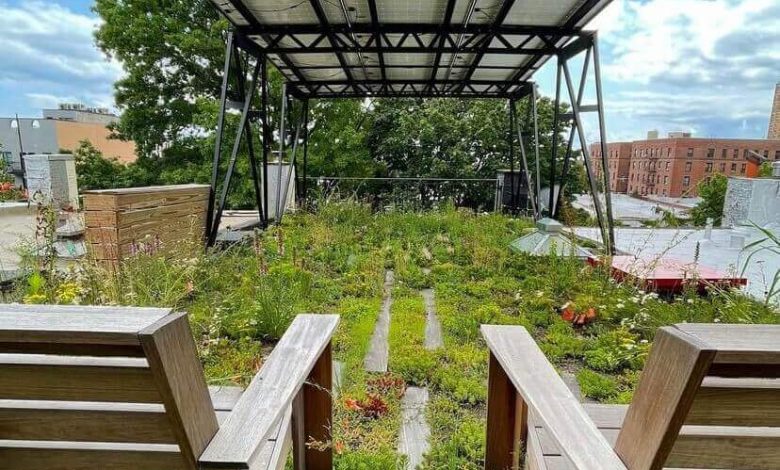
In New York City, the drive toward carbon neutrality has reshaped building regulations to prioritize energy efficiency and renewable energy. A key part of this initiative is the requirement for new construction to incorporate solar panels or green roofs, as mandated by Local Laws 92 and 94.
While existing buildings are not universally required to install solar panels, those undergoing major roof alterations may be subject to these requirements. Read on to see what this could mean for your NYC property.
Understanding NYC Building Codes and Solar Panel Mandates for New Construction
New York City has taken bold steps toward reducing greenhouse gas emissions and achieving carbon neutrality by 2050. To support these goals, the city has implemented a series of forward-thinking building codes designed to promote sustainability and energy efficiency. Among these measures, solar panel and green roof mandates stand out as pivotal requirements for new construction and major roof renovations.


By requiring the installation of solar photovoltaic systems, green roofs, or a combination of the two, these codes not only enhance energy efficiency but also help mitigate the urban heat island effect, improve stormwater management, and reduce overall building emissions. These initiatives reflect the city’s commitment to creating a more sustainable urban environment while encouraging property owners and developers to adopt greener building practices.
Understanding how these mandates apply to various building types and roof conditions is critical for compliance. With solar panels playing a key role in these regulations, developers and property owners must navigate complex requirements to align their projects with NYC’s sustainability objectives.
Key NYC Building Codes Mandating Solar Panels
While other building codes focus on broader energy efficiency measures, Local Laws 92 and 94 are the cornerstone regulations in New York City requiring solar panel and/or green roof installation. These laws aim to reduce the city’s carbon footprint, improve energy efficiency, and combat the urban heat island effect. Let’s look at the requirements, applications, and exceptions under these important local laws.
Local Laws 92 and 94
Enacted in 2019, Local Laws 92 and 94 require that the roofs of certain buildings be partially covered with green roofs or solar photovoltaic electricity-generating systems. These laws apply to new buildings and to existing buildings undergoing major roof renovations, aiming to enhance energy efficiency and reduce urban heat island effects.
Compliance is critical, as projects cannot obtain a Certificate of Occupancy without a related and code-compliant solar application.
When do Solar Panel Requirements Apply?
LL 92 and 94 mandated that beginning November 15, 2019, all new buildings and roof replacements in NYC must install a solar photovoltaic system or green roof (or a combination of the two). There are some exceptions and different requirements based on the size, classification, and slope of the roof.


- For continuous roof area greater than 200 square feet (100 square feet or more in Group R buildings up to five stories), and a slope below 2:12
- A solar system, green roof, or a combination of both, must be installed.
- If the solar power capacity cannot reach 4 kW due to conditions like shading, a green roof is the only option.
- A minimum solar panel efficiency of 15% must be used for all calculations.
- For continuous roof area of less than 200 square feet (less than 100 square feet in Group R buildings up to five stories), and a slope below 2:12
- A solar system reaching 4 kW must cover the entire area
- If solar capacity cannot be reached, the entire area must be covered by a green roof
- A combination of a solar PV system and green roof is not allowed
- Continuous roof area with a slope higher than 2:12
- A solar PV system is the only option because the slope is too great for a green roof
- However, if a solar capacity of 4 kW cannot be reached, that roof section is exempt from LL92/94
Exceptions to LL 92 and 94
The requirements of this law apply to all new roof installations in the city and are based on the square footage of “continuous” or available space on the roof. In some cases, a roof or sections of a roof may be exempt from the requirements of these laws. Here are some exceptions:
- If the slope of the roof is greater than 2:12 and a solar system would not reach a capacity of 4 kW
- Too much of the roof area is occupied by other structures such as water towers, mechanical equipment, or stormwater management systems
- The roof is already occupied by recreational spaces
- If you’re making simple repairs to your roof, rather than replacing it altogether
Other Local Energy Efficiency Mandates
While Local Laws 92 and 94 explicitly require solar panels for certain buildings, there are other building codes in New York City where the use of solar can help property managers comply and avoid fines.
Local Law 97
Local Law 97 limits greenhouse gas emissions for buildings over 25,000 square feet. In accordance with city goals, these buildings must reduce their emissions by 40% by 2030, and by 80% by 2050.To comply with Local Law 97, you’ll likely need to make some energy efficient improvements to your building. This could include:


Local Law 154
Local Law 154, also known as the “All-Electric Building Act,” mandates that new buildings in New York City utilize electric heating and appliances, effectively prohibiting the use of fossil fuels in most new construction.
As of 2024, new buildings under seven stories must not use fossil fuels for heating, hot water, cooking, or other energy needs. By 2027, these requirements will extend to larger buildings over seven stories.
While clean energy isn’t required to comply with this law, it can help. By pairing building electrification with solar energy, you can significantly cut down on operating costs and increase your building’s energy efficiency. Planning for solar during the design phase not only ensures compliance but also allows you to capitalize on renewable energy incentives and long-term savings.
Key Rules and Regulations for NYC Solar Installations
Navigating the rules for solar installations in New York City requires careful attention to building codes and regulations to ensure compliance while maximizing energy efficiency. Proper planning and early collaboration with solar consultants can streamline the process and prevent costly design changes or delays. As a solar installation firm in NYC, here are some of the factors that we need to consider.
Fire Safety Codes and Solar Panel Placement
The New York City Fire Code specifies requirements for rooftop access and ventilation pathways to ensure firefighter safety.


Collaboration between architects and solar specialists early into the planning process ensures maximum solar output while meeting fire code requirements.
Looking to design a code-compliant building in NYC? Submit your design today and see what solar can do for you!
Meeting Minimum Efficiency Standards
Solar installations must meet specific efficiency standards as outlined in the New York City Energy Conservation Code. This includes considerations for system performance, energy output, and overall contribution to the building’s energy efficiency.
Managing Shading and Lot Line Considerations
Proper placement of solar panels is crucial to maximize energy production. Installations must account for potential shading from adjacent structures and comply with zoning regulations related to lot lines and building heights.
Historic District and Specialty Building Restrictions
Buildings located within historic districts or those with landmark status may face additional restrictions on solar installations. Approvals from the Landmarks Preservation Commission are often required to ensure that solar panels do not compromise the building’s historic character.
Ensuring Compliance with Mandates and Smooth Solar Installations
Meeting NYC’s solar mandates requires strategic planning and expert guidance. Proper integration of solar systems not only ensures compliance with building codes but also enhances project efficiency and sustainability. Here are some critical steps and considerations for achieving seamless and code-compliant solar installations in New York City.
Planning Rooftop Layouts for Solar Compliance
Effective designs accommodate fire codes, structural integrity, and solar optimization. Early planning minimizes costly revisions later in the design stages.
Key Milestones for Including Solar Consultants
Bringing solar consultants on early in the design process ensures that solar integration aligns with architectural plans, structural considerations, and regulatory requirements.
Navigating the NYC Department of Buildings Approval Process
The Department of Buildings requires permits for solar installations, including electrical and construction permits. Compliance with building codes, zoning laws, and safety regulations is essential for approval. Missteps can delay projects significantly.
That’s why we recommend working with a solar installer – like us – who not only specializes in permitting solar projects in NYC, but handles it all on your behalf. Submit a solar design request today!
Solutions for Solar Installations in Dense Urban Environments
In urban settings, innovative solutions such as solar canopies, tilt racks, and ballasted systems can overcome space constraints and maximize energy generation.
Frequently Asked Questions About Solar Regulations
What is Zoning Compliance and How does NYC’s City of Yes Initiative Impact Solar Projects?
Zoning compliance involves adhering to regulations that dictate land use, building size, and placement. The City of Yes initiative aims to modernize zoning laws to facilitate sustainable development, potentially easing restrictions on solar installations and promoting renewable energy adoption. The City of Yes initiative allows for a 15-foot rise clearance for solar on flat roofs, creating easier integration while addressing zoning limitations.
How do Solar Panels Impact Structural and Electrical Design?
Installing solar panels adds weight to a building’s roof and requires integration with its electrical system. Structural assessments are necessary to ensure the roof can support the additional load, and electrical designs must accommodate the new energy inputs safely.
For new building designs, we highly recommend getting in touch with a local solar specialist as soon as possible. This will allow for code-compliant building designs with the best integration plan. Submit your building design for free today!
Do Solar Systems Require a lot of Cleaning and Maintenance?
A common misconception is that solar panels require extensive maintenance. In reality, they are designed to be low-maintenance. You don’t need to clean your panels. Your solar array is angled so that rainwater can run off naturally, taking with it any build up and debris. If you do choose to clean your panels, however, avoid harsh detergents and metal or hard plastic brushes that could scratch the glass.
You also don’t need to clean snow off of your panels and we don’t recommend it. The power you may miss out on during a snowstorm is minimal. It’s not worth risking a trip up to an icy rooftop.
Integrate Solar into Your New Building Plans with Local Experts
Collaborating with local solar experts who understand New York City’s specific regulations and incentives can streamline the process of integrating solar energy systems into new building projects, ensuring compliance and optimizing both financial and environmental benefits.
Do you need solar options for your next project? Submit a design request to our team today.
